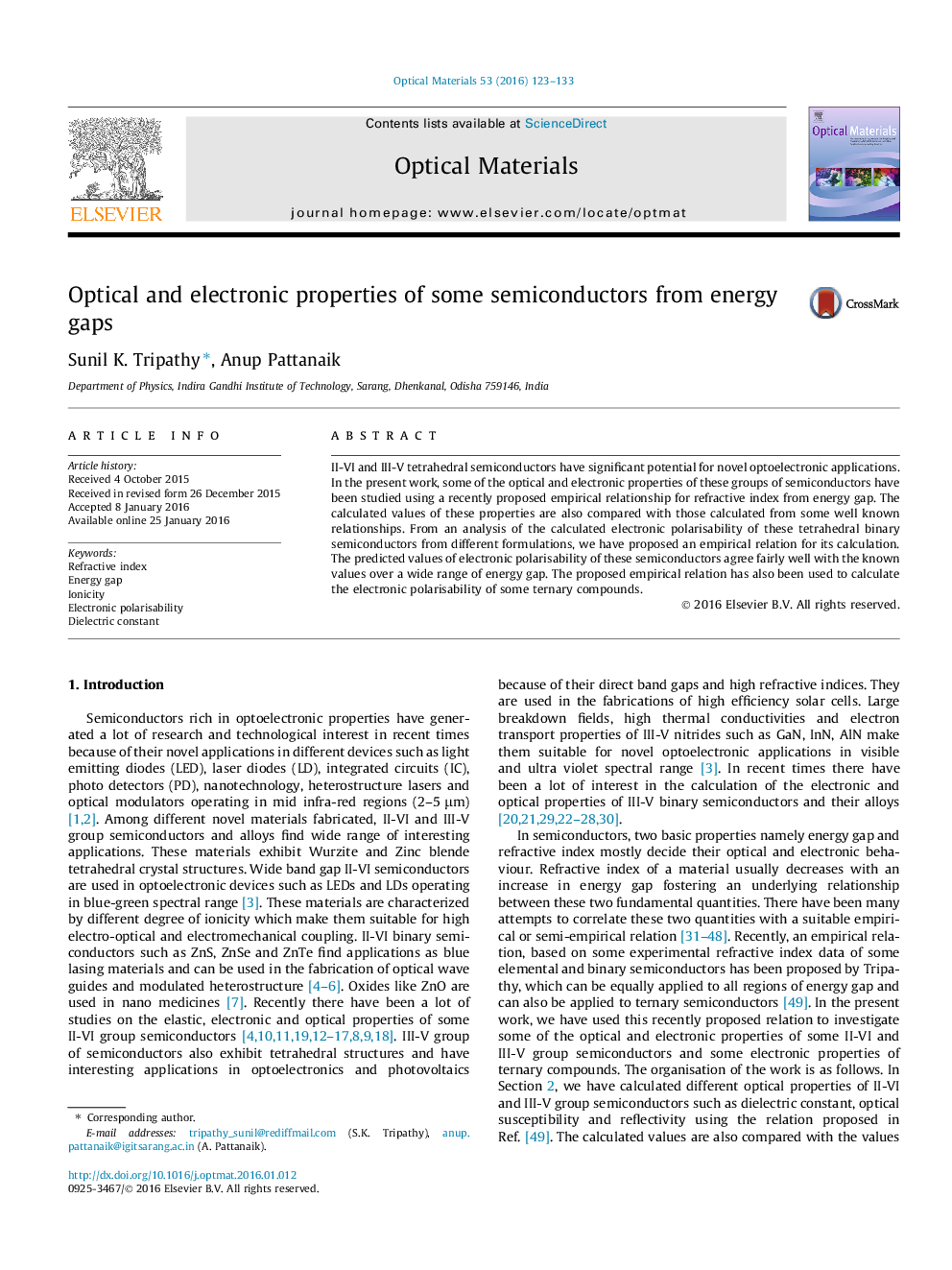| Article ID | Journal | Published Year | Pages | File Type |
|---|---|---|---|---|
| 1493374 | Optical Materials | 2016 | 11 Pages |
•Some optical and electronic properties of II-VI and III-V group semiconductors are calculated from energy gaps using some empirical relationships.•Dielectric constant and linear optical susceptibility decrease with energy gap.•Ionicity linearly increases with energy gap.•Electronic polarisability decreases with energy gap. The dominant factor comes from the structure and composition of the material.•An empirical relation of electronic polarisability from energy gap is suggested that can be applied to both binary and ternary semiconductors.
II-VI and III-V tetrahedral semiconductors have significant potential for novel optoelectronic applications. In the present work, some of the optical and electronic properties of these groups of semiconductors have been studied using a recently proposed empirical relationship for refractive index from energy gap. The calculated values of these properties are also compared with those calculated from some well known relationships. From an analysis of the calculated electronic polarisability of these tetrahedral binary semiconductors from different formulations, we have proposed an empirical relation for its calculation. The predicted values of electronic polarisability of these semiconductors agree fairly well with the known values over a wide range of energy gap. The proposed empirical relation has also been used to calculate the electronic polarisability of some ternary compounds.
Graphical abstractFigure optionsDownload full-size imageDownload high-quality image (100 K)Download as PowerPoint slide
